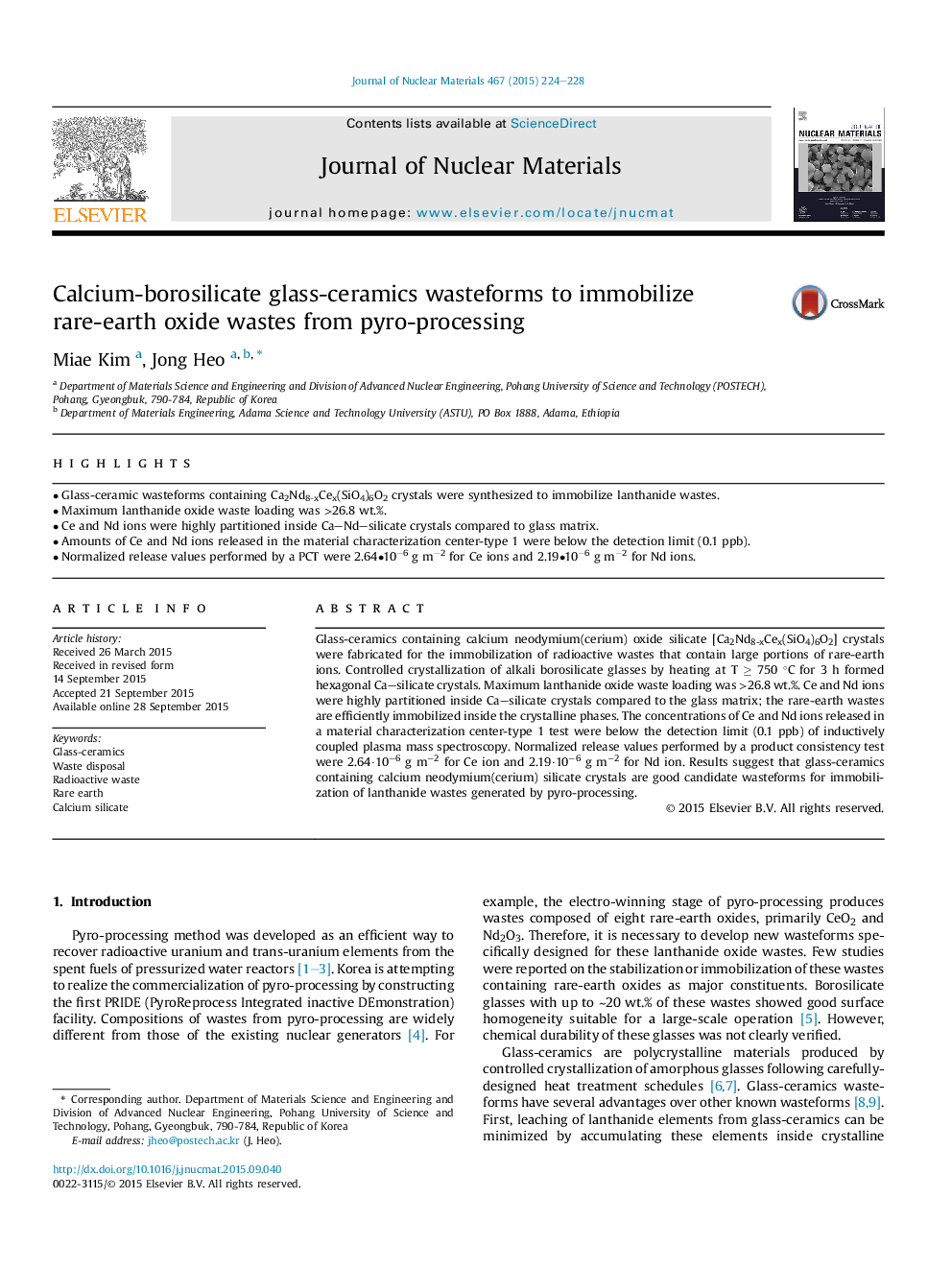| Article ID | Journal | Published Year | Pages | File Type |
|---|---|---|---|---|
| 1564878 | Journal of Nuclear Materials | 2015 | 5 Pages |
•Glass-ceramic wasteforms containing Ca2Nd8-xCex(SiO4)6O2 crystals were synthesized to immobilize lanthanide wastes.•Maximum lanthanide oxide waste loading was >26.8 wt.%.•Ce and Nd ions were highly partitioned inside Ca–Nd–silicate crystals compared to glass matrix.•Amounts of Ce and Nd ions released in the material characterization center-type 1 were below the detection limit (0.1 ppb).•Normalized release values performed by a PCT were 2.64•10−6 g m−2 for Ce ions and 2.19•10−6 g m−2 for Nd ions.
Glass-ceramics containing calcium neodymium(cerium) oxide silicate [Ca2Nd8-xCex(SiO4)6O2] crystals were fabricated for the immobilization of radioactive wastes that contain large portions of rare-earth ions. Controlled crystallization of alkali borosilicate glasses by heating at T ≥ 750 °C for 3 h formed hexagonal Ca–silicate crystals. Maximum lanthanide oxide waste loading was >26.8 wt.%. Ce and Nd ions were highly partitioned inside Ca–silicate crystals compared to the glass matrix; the rare-earth wastes are efficiently immobilized inside the crystalline phases. The concentrations of Ce and Nd ions released in a material characterization center-type 1 test were below the detection limit (0.1 ppb) of inductively coupled plasma mass spectroscopy. Normalized release values performed by a product consistency test were 2.64·10−6 g m−2 for Ce ion and 2.19·10−6 g m−2 for Nd ion. Results suggest that glass-ceramics containing calcium neodymium(cerium) silicate crystals are good candidate wasteforms for immobilization of lanthanide wastes generated by pyro-processing.
